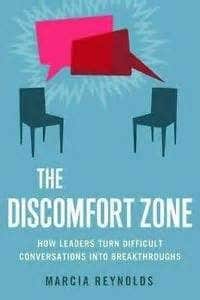We welcome Dr. Marcia Reynolds back to the site to provide insight into ways of understanding and releasing your emotional triggers. Learn about Marcia’s book, The Discomfort Zone and how to turn discomfort into a leadership asset. – InPower Editors
How to Tame Your Emotional Triggers
No matter how friendly and caring a person you want to be, your brain has you doing and saying things that aren’t so kind when your emotions are triggered. The brain responds to stimuli long before your conscious brain can choose. Your immediate reactions often produce bad results and then instead of trying to undo what happened, you quickly find reasons to justify your behavior.
For example, you get very angry because you can’t find a report you were working on. You blame the company for giving you insufficient space, the cleaners for moving things around on your desk, or your boss for giving you a stupid task or deadline. You ignore the reasons you are tired, why your patience is thin, and why you misplaced the report in the first place.
“The ingenuity of self-deception is inexhaustible,” wrote essayist Hannah Moore in 1881. The act of rationalizing is so quick, the best you can do is to recognize when it occurs and choose to consider what else could be causing your reaction.
Take these 5 steps to help you tame your emotional triggers:
Accept responsibility for your reactions
Because of your brain’s quick reaction time, it’s not how you react but how you act following a reaction that matters. You can become aware of your emotions and rationalizations and then tell your brain what you would like to think and do differently in spite of your emotional triggers.
When you seek to identify what is triggering how you feel in the moment, you give yourself the power to feel differently if you want to. You will also have more clarity on what you need to do or what you need to ask for to change your circumstances.
Recognize that you are having an emotional reaction as soon as it appears in your body
According to neuroscientist Antonio Damasio, author of Looking for Spinoza: Joy, Sorrow and the Feeling Brain, at any moment, your rate of breathing, blood flow, tension in your muscles and constriction in your gut represents a pattern you can identify as a feeling. The sooner you recognize that you are breathing quickly or not at all, that certain muscles in your body tightened, or that you feel pressure in your gut or heart, stop and ask yourself what you are feeling and why. You can download a list of emotional states and an exercise to increase your awareness of emotions on this page.
No matter what you learned about the evils of emotions, if you don’t recognize your feelings, you can’t change them, negatively impacting your relationships, job performance, and overall happiness. – Click To Tweet
Determine what triggered the emotion
What do you think you lost or what did you not get that you expected or desired to have?
When your brain perceives that someone has taken or plans to take one of these important things away from you, your emotions are triggered.
The quicker you notice an emotion is triggered, the sooner you can discover if the threat is real or not.
The following list includes some of the most common emotional triggers, meaning you react when you feel as though you aren’t getting or will not get one of these needs met.
acceptance respect be liked
be understood be needed be valued
be in control be right be treated fairly
attention comfort freedom
peacefulness balance consistency
order predictability love
safety feel included autonomy
fun new challenges independence
Some of these needs will be important to you. Others will hold no emotional charge for you. When you have an emotional reaction, use the list to determine what need you had that was not met or what you fear won’t be met in the future. The unmet need or threat is what triggered your emotional reaction.
Choose what you want to feel and what you want to do
With practice, the reaction to your emotional triggers could subside, but they may never go away. The best you can do is to quickly identify when an emotion is triggered and then choose what to say or do next.
Ask yourself: Are you really losing this need or not? Is the person actively denying your need or are you taking the situation too personally? If it’s true that someone is ignoring your need or blocking you from achieving it, can you either ask for what you need or, if it doesn’t really matter, can you let the need go for now?
Choose to ask for what you need, let it go if you honestly feel that asking for what you need will have no value, or do something else to get your need met.
Actively shift your emotional state
Choose one keyword that represents how you want to feel in this moment, such as calm, patient, confident, courageous, or caring. Breathe in the word and allow yourself to feel the shift.
Stop trying to managing your emotions. Instead, seek to understand what triggered the emotion, determine if you need to ask for what you think you didn’t get, and then choose to feel something different when an emotion arises. This is how you gain emotional freedom from your triggers.
Embrace discomfort to grow emotionally and professionally! Get Marcia’s book!

Updated-Originally published April 2016
Get a handle on your emotions during discomfort. Sign up for our free emotional detriggering eCourse.
Break Free from Emotional Triggers
Free eCourse
When you’re emotionally triggered, your reactions to stressful situations (and people) feel out of control.
All the stress reduction in the world can’t help you if your emotional triggers are in charge.
These 3 lessons will get you back in the driver’s seat.







